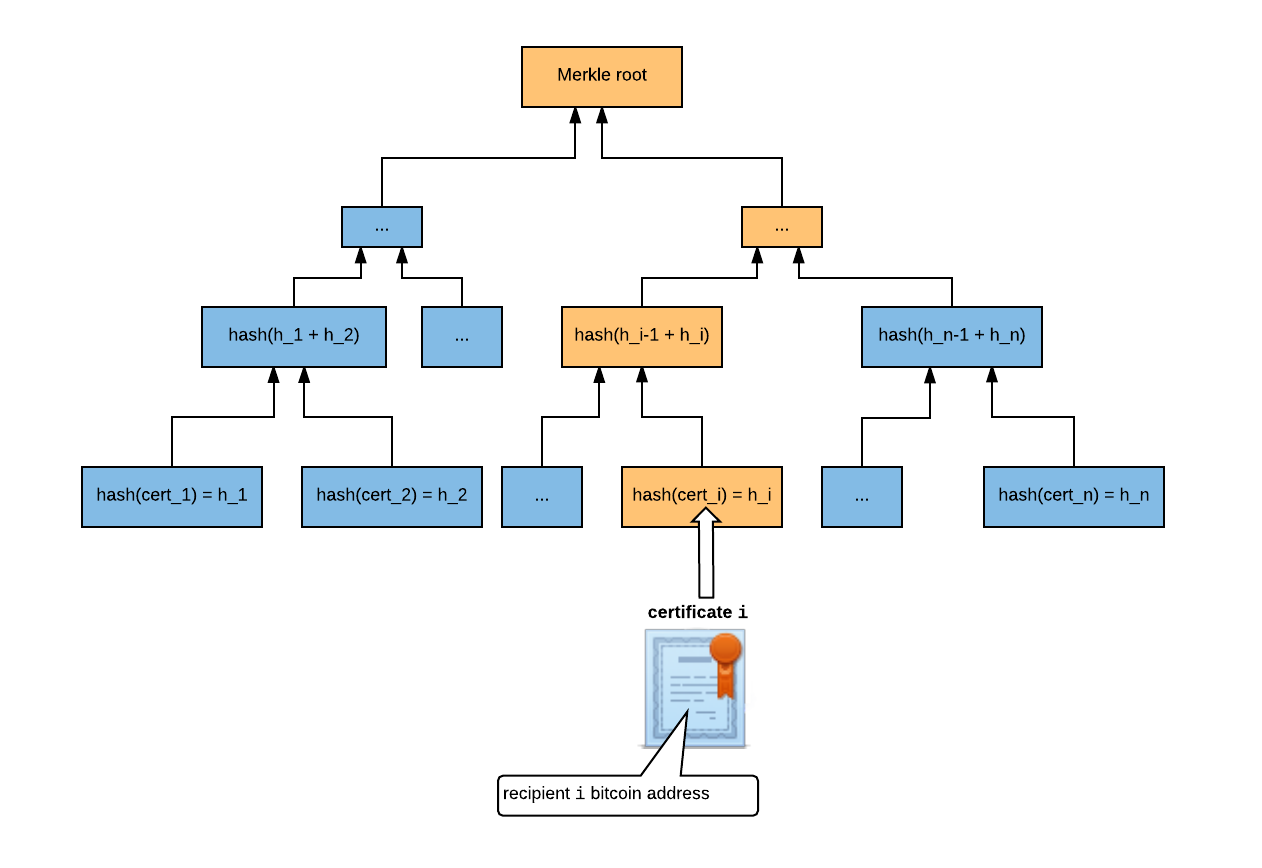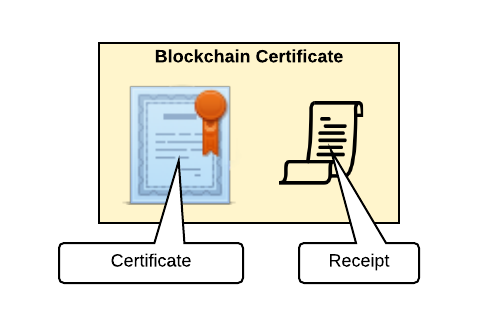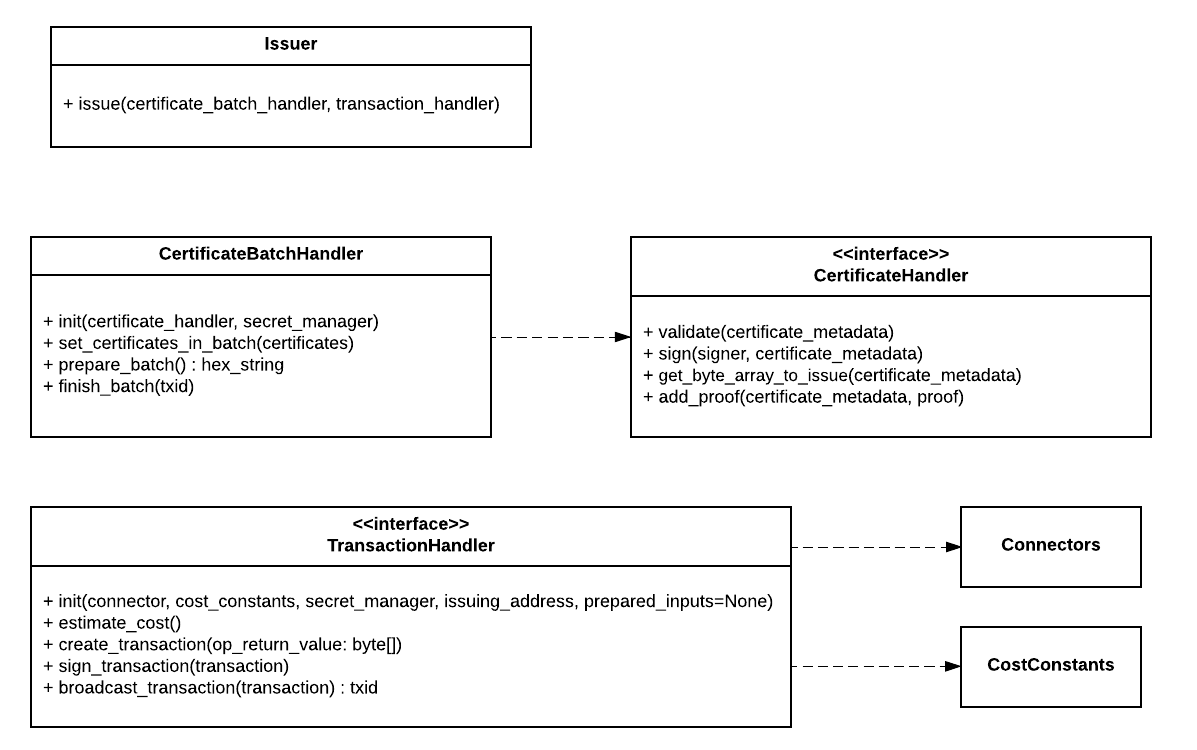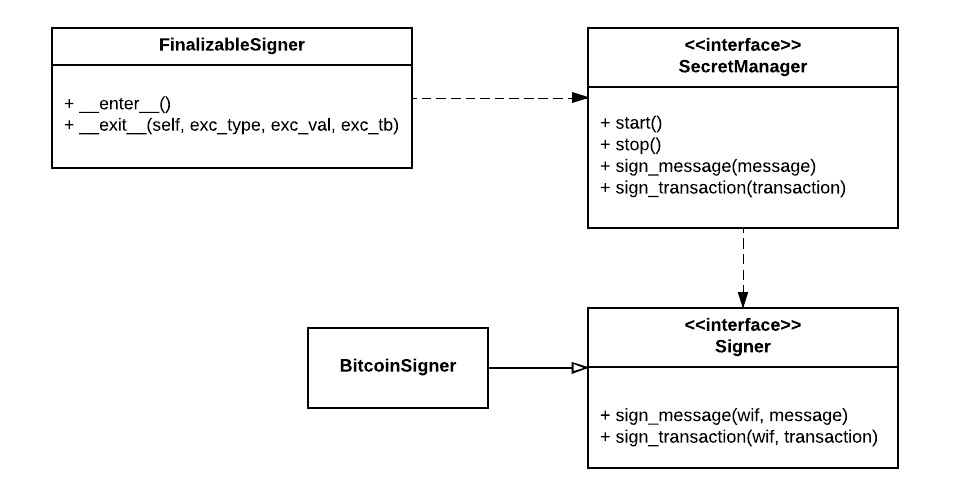The cert-issuer project issues blockchain certificates by creating a transaction from the issuing institution to the recipient on the Ethereum blockchain that includes the hash of the certificate itself.
Currently, we support issuing to the bloxberg blockchain network using the BLIPS-2 Standard for Research Object Certification.
The instructions below pertain mainly to using the cert-issuer via CLI. For the API interface, please view our cert-api repository.
In order to create unsigned certificates, you must first follow the instructions in our cert-tools repository. The below instructions assume you have already a batch of unsigned certificates generated.
Before issuing certificates, you must also ensure that an associated smart contract is deployed to the bloxberg blockchain that your address has control over. Please follow the instructions located in cert-deployer to deploy the contract.
-
Create a python environment. Recommendations
-
Run the following command in the terminal:
python setup.py install experimental --blockchain=ethereum_smart_contract -
Copy the
conf_template.inifile and rename asconf.ini. -
Make sure you have enough ETH in your issuing address.
a. Go to https://myetherwallet.com and create a public address and private key. Make sure to store the private key in a secure location. b. Go to https://faucet.bloxberg.org and enter your created public address to receive bergs.
-
Configure the unsigned_certificates_dir variable in the conf.ini file to the unsigned certificates directory. Alternatively, you can also specify the directory created from the cert-tools repository to avoid copying the unsigned certificates.
# To use a sample unsigned certificate as follows: cp /cert-issuer/examples/data-testnet/unsigned_certificates/3bc1a96a-3501-46ed-8f75-49612bbac257.json /cert-issuer/data/unsigned_certificates/ -
Further configure the settings for cert-issuer in
conf.ini. The private key file should be a raw private key: a hex str, bytes or int -
Lastly, we can issue the certificates by running
python cert_issuer -c conf.ini
While it is possible to issue one certificate with one Ethereum transaction, it is far more efficient to use one Ethereum transaction to issue a batch of certificates.
The issuer builds a Merkle tree of certificate hashes and registers the Merkle root as the cryptographic identifier in an Ethereum smart contract.
Suppose the batch contains n certificates, and certificate i contains recipient i's information. The issuer hashes each certificate and combines them into a Merkle tree:
The root of the Merkle tree, which is a 256-bit hash, is issued on the bloxberg blockchain.
The Blockchain Certificate given to recipient i contains a 2019 Merkle Proof Signature Suite-formatted signature, proving that certificate i is contained in the Merkle tree.
This receipt contains:
- The Ethereum transaction ID storing the Merkle root
- The expected Merkle root on the blockchain
- The expected hash for recipient
i's certificate - The Merkle path from recipient
i's certificate to the Merkle root, i.e. the path highlighted in orange above.h_i -> … -> Merkle root
The verification process performs computations to check that:
- The hash of certificate
imatches the value in the receipt - The Merkle path is valid
- The Merkle root stored on the blockchain matches the value in the receipt
These steps establish that the certificate has not been tampered with since it was issued.
The Blockchain Certificate JSON contents without the signature node is the certificate that the issuer created. This is the value needed to hash for comparison against the receipt. Because there are no guarantees about ordering or formatting of JSON, first canonicalize the certificate (without the signature) against the JSON LD schema. This allows us to obtain a deterministic hash across platforms.
The detailed steps are described in the verification process.
How a batch is defined can vary, but it should be defined such that it changes infrequently. For example, “2016 MIT grads” would be preferred over “MIT grads” (the latter would have to be updated every year).
Decide which chain (Bitcoin or Ethereum) to issue to and follow the steps. The bitcoin chain is currently best supported by the Blockcerts libraries. Follow the steps for the chosen chain.
By default, cert-issuer issues to the bloxberg blockchain. Run this setup to issue to the standard chain:
To issue to the ethereum blockchain using the smart contract backend, run the following:
python setup.py install experimental --blockchain=ethereum_smart_contract
Currently, we support issuing to the bloxberg blockchain network using the BLIPS-2 Standard for Research Object Certification.
These steps involve storing secure information on a USB. Do not plug in this USB when your computer's wifi is on.
- Create issuing address on Myetherwallet
- Go to https://www.myetherwallet.com/.
- For the best security turn off your connection to the internet when you are on the create wallet page.
- Go through the create wallet process
- Store the private key in a secure location
- Copy the public key to the
issuing_addressvalue in conf.ini
This project uses tox to validate against several python environments.
-
Ensure you have an python environment. Recommendations
-
Run tests
./run_tests.sh
The Issuer api is quite simple; it relies on CertificateHandlers and Transaction Handlers to do the work of
extracting the data to issue on the blockchain, and handling the blockchain transaction, respectively.
CertificateBatchHandler manages the certificates to issue on the blockchain. It ensures that all accessors iterate
certificates in a predictable order. This is critical because the Merkle Proofs must be associated with the correct
certificate. Python generators are used here to help keep the memory footprint low while reading from files.
prepare_batch- performs the preparatory steps on certificates in the batch, including validation of the schema and forming the
data that will go on the blockchain. Certificate-level details are handled by
CertificateHandlers - returns the hex byte array that will go on the blockchain
- performs the preparatory steps on certificates in the batch, including validation of the schema and forming the
data that will go on the blockchain. Certificate-level details are handled by
finish_batchensures each certificate is updated with the blockchain transaction information (and proof in general)
CertificateHandler is responsible for reading from and updating a specific certificate (identified by certificate_metadata).
It is used exclusively by CertificateBatchHandler to handle certificate-level details:
validate: ensure the certificate is well-formedsign: (currently unused)get_byte_array_to_issue: return byte array that will be hashed, hex-digested and added to the Merkle Treeadd_proof: associate a a proof with a certificate (in the current implementation, the proof is embedded in the file)
TransactionHandler deals with putting the data on the blockchain. Currently only a Bitcoin implementation exists
Finalizable signer is a convenience class allowing use of python's with syntax. E.g.:
with FinalizableSigner(secret_manager) as fs:
fs.sign_message(message_to_sign)
SecretManagers ensure the secret key (wif) is loaded into memory for signing. FileSecretManager is the only current implemenation.
Handles forming the Merkle Tree, returning the data to put on the blockchain, and returning a python generator of the proofs.
This class structure is intended to be general-purpose to allow other implementations. (Do this carefully if at all.)
- Create an account for pypi & pypi test
- Install twine -
pip install twine - Increment version in
__init__.py - Remove current items in dist -
rm -rf dist/* - Build cert-issuer -
python setup.py install - Build sdist -
python setup.py sdist - Run pypi test upload -
twine upload --repository-url https://test.pypi.org/legacy/ dist/* - Upload to pypi -
twine upload --repository-url https://upload.pypi.org/legacy/ dist/*
The files in examples/data-testnet contain results of previous runs.
- Ethereum Bloxberg: https://blockexplorer.bloxberg.org and search for the tx id.
If your install on Mac is failing with a message like the following, try the workaround described in this thread.
fatal error: 'openssl/aes.h'
file not found
#include <openssl/aes.h>
Contact us at info@bloxberg.org for more information.




